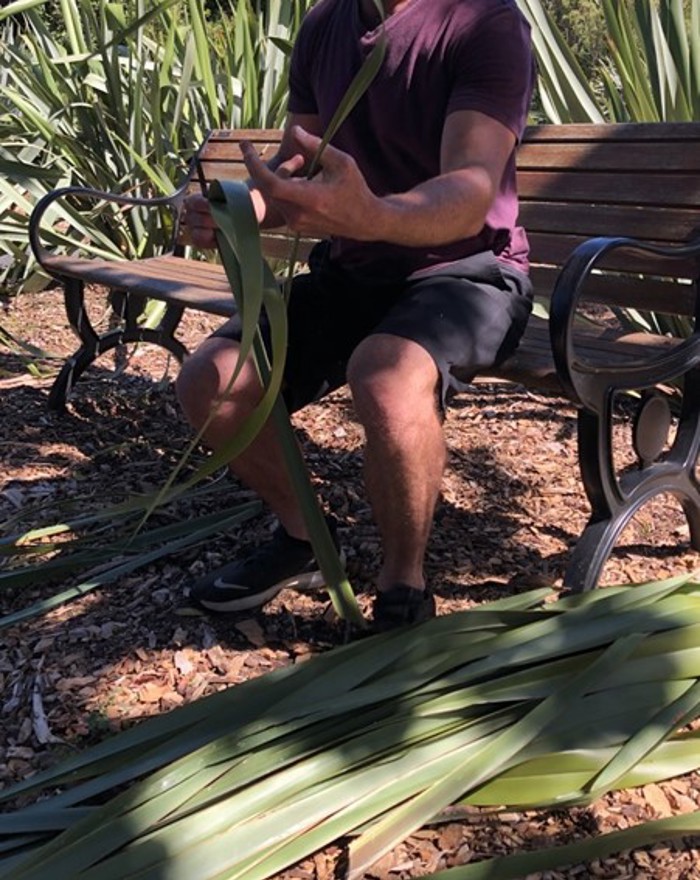
WOW winner made with Botanic Gardens' harakeke
World of Wearable Art - Sustainability winner
Fibre harvested from Auckland Botanic Gardens’ Pā Harakeke collection has featured in a winning entry in this year’s World of Wearable Art (WOW) competition.
Designer Christopher Davis’ entry 'Haerenga' won the Sustainability Award. The beautiful work is made entirely from natural materials and features 1500 pieces of pumice tied together with harakeke fibres. Inside each piece of pumice are one or more native plant seeds from kōwhai, pōhutukawa, tī kōuka (cabbage tree), and harakeke.

Haerenga, by Christopher Davis (costume images courtesy of WOW).
“I really wanted to challenge myself as a designer this year and create something that would have a life after the WOW show and wouldn't impact on the environment but add to it. I like to think this garment is temporarily 'borrowed from nature,” writes Christopher.
All the flax fibre was harvested from Auckland Botanic Garden’s working harakeke collection. The cultivars used were Paoa (originally from Tūranga-nui-a-Kiwa/Gisborne) and Matawai Taniwha (from Matawai) and were chosen for their yellow tone once dry.
Christopher says the inspiration for the work comes from the journey Māori took to Aotearoa.
“Human limbs extend and become tree limbs, harakeke grows precariously on rock faces, feathers adorn objects from nature. Jute knots crudely secure pumice together like a raft. The pumice represents the form of a seed and also Māori ancestors; both have journeyed. Each stone holds a native seed. Once this garment has served its purpose, it will be returned to nature. Floating out to sea, the jute will eventually decompose releasing the pumice and dispersing the seeds. Once settled the seed will grow sending down its roots, becoming a part of Aotearoa.”
When not designing award winning artworks Christopher is a landscape gardener.
Auckland Botanic Gardens congratulates him on his award and his beautiful creation.

Harakeke being harvested and prepared at Auckland Botanic Gardens.
--

Some of the pumice used in the creation.